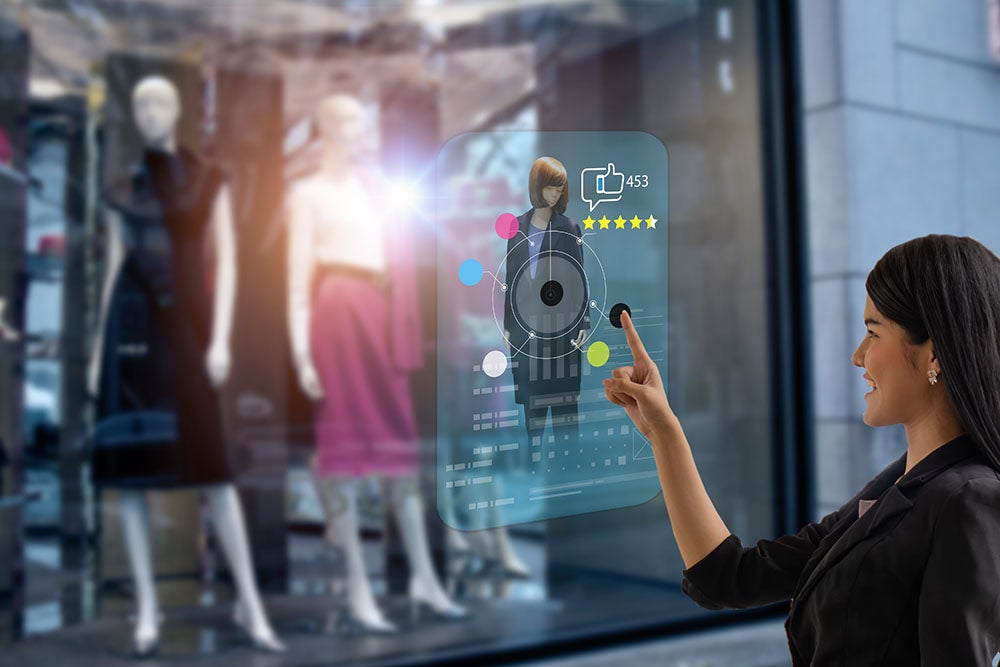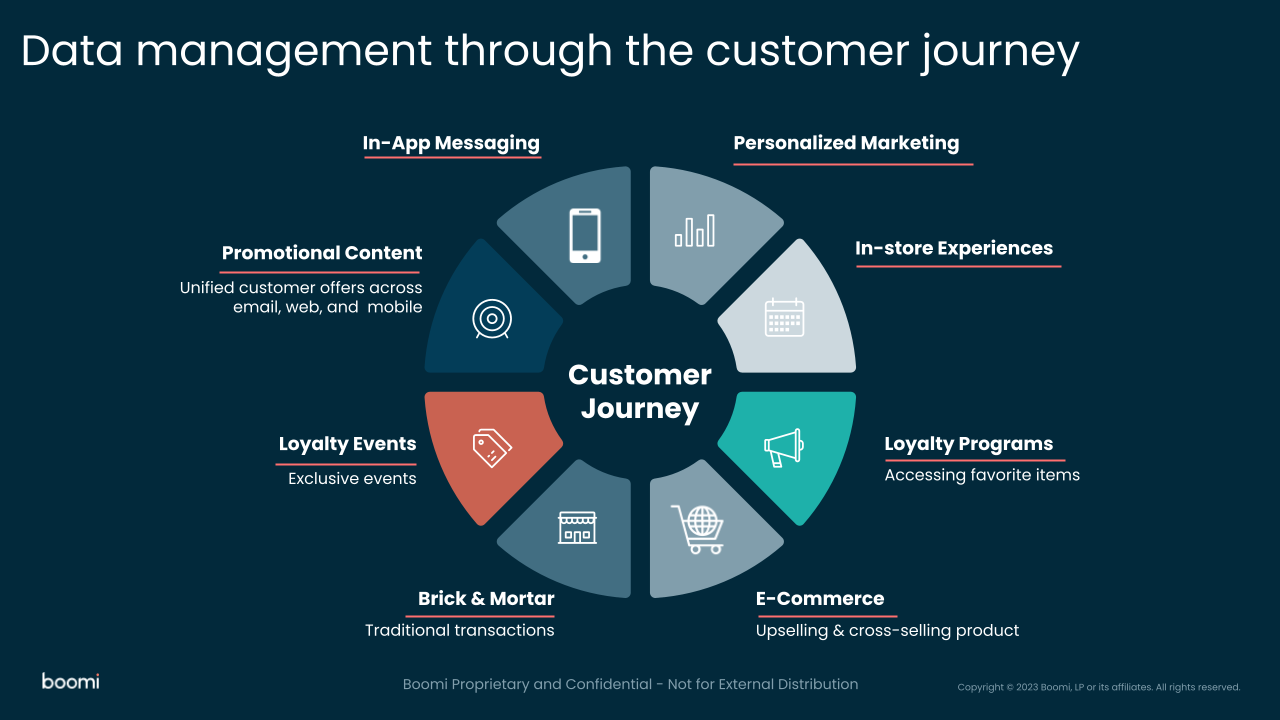Personalization works. It’s proven to drive revenue and loyalty. In fact, one 2022 study found that 86 percent of consumers like personalized offers. So why isn’t your retail business doing personalization as effectively as top retailers?
It’s not as if you lack customer data. You’ve got huge quantities of data — customer transactions, browsing history, channel preferences, mobile app usage, demographics, and more. With all that data, your business should be able to deliver personalized messages to the right shoppers at the right time over the right channel.
That’s the theory. The reality is often far different. The problem is that customer data is scattered across silos. It’s fragmented and inconsistent. Many retailers lack the unified 360-degree view of data across all channels that’s needed for effective personalization.
Why Personalization Delivers Mixed Results
In pursuit of personalization, retailers have tried various approaches over the years. One approach is for the IT team to stitch customer data together into a cohesive foundation. That can be a difficult, labor-intensive, and costly project that drags on for many months if IT is hand-coding integrations to connect applications and data.
Another approach is for business-side staff to round up data into spreadsheets or databases — another tedious chore. The data may be fed into a personalization solution but if that data isn’t sound to start with, the retailer faces a sizable risk of off-target messaging that can hurt brand equity.
To complicate matters, a personalization project may be isolated to a business unit like loyalty or marketing. Unless data is connected across all business units and the full omnichannel environment through which customers use for everything from search to purchase to support, personalization results are going to be mixed.
And of course, business applications change frequently. It’s not uncommon for sizable retailers to have dozens of systems in place, for ecommerce, point of sale (POS), loyalty, customer service, merchandising, and more. Whenever a retailer adopts a newer, better system, whatever brittle integrations have been cobbled together have to be rebuilt.
In fact, integration is the #1 obstacle that retailers face when implementing a new system, according to TotalRetail’s annual retail technology report for 2022.
I’ve experienced these problems first hand over a 20-year career at companies like GameStop, Hasbro, and Walt Disney. When a job opportunity arose with Boomi, I saw a way that I could help my retail peers who struggled with manual data work and lack of visibility that undermined their efforts.
The Ideal of Omnichannel Personalization
One reason Boomi appealed to me was its leadership in the integration platform as a service (iPaaS) market. As the world’s largest iPaaS provider, with numerous awards and accolades, we are trusted by thousands of organizations around the globe, with a strong presence in retail,
Plus, I saw how the Boomi platform was perfectly suited to solve challenges like retail personalization. Boomi equips retailers with intelligent connectivity and automation to break down data silos, accelerate business processes, and unlock the power of data — crucial elements for personalization success.
Using Boomi’s Retail Personalization Accelerator, a turnkey solution designed for rapid deployment, retailers can personalize the customer journey with a framework for comprehensive, consistent, and timely data.
Comprehensive. Retailers can achieve the ideal of omnichannel personalization by capturing customer interaction data from all touchpoints — not just a handful that may be expedient or specific to a function like ecommerce or physical stores.
Comprehensive connectivity across standalone systems creates a 360-degree view of all customer activity, from web browsing and digital ad engagement to customer service inquiries, brick-and-mortar transactions, and mobile app usage. That foundation is the only way to truly understand customers and anticipate their needs.
Consistent. Data stored in disparate applications is always going to be inconsistent. Customer addresses and even names change over time. Boomi master data capabilities let you aggregate, cleanse, and enrich that data into uniform “golden records” that provide a single source of truth.
That’s a big deal because inconsistent data can sabotage personalization efforts. You can end up making different or duplicate personalized offers that leave shoppers frustrated and confused — and less likely to purchase from a merchant that can’t seem to get it together.
Timely. Personalization’s payback soars when you can do “marketing in the moment,” tempting a customer with an offer as they evaluate options and near a purchase decision. Boomi can feed near real-time activity data into your personalization solution to trigger immediate outreach through email, digital ads, or text. Result: You improve engagement, revenue, and loyalty.
And speaking of time, I’ll note that Boomi can be up and running in a fraction of the time that would be needed to hand-code integrations. Boomi customers report they’re able to speed deployment by 2X, 5X, and even 10X compared to alternative approaches, and don’t face re-engineering ordeals every time they add a new system.
Capturing data from all customer journey touchpoints lets you better understand and engage shoppers.
Rethinking Retail’s Innovation Priorities
Ongoing innovation characterizes Boomi’s commitment to the retail sector. For example, Boomi can work with artificial intelligence/machine learning (AI/ML) solutions you may use, such as Aible, a leader in enterprise AI, to further optimize personalization and other initiatives with predictive analytics.
Meanwhile, Boomi’s iPaaS empowers retailers to deploy data capture mechanisms directly on in-store POS terminals. In effect, your POS terminals function as Internet of Things (IoT) devices that feed customer transaction data into a repository such as a data warehouse to augment a customer profile.
The retail industry itself has a strong focus on innovation, but it’s tended to prioritize the latest and greatest front-end customer experience applications. Less attention is paid to back-end systems like an integration platform when it comes time for the C-suite to approve a technology investment.
Yet the effectiveness of front-end applications depends heavily on their integration with other systems across the full retail environment. In many cases, it’s up to departmental leads to make a business case for unlocking the value of data for personalization and other initiatives.
To get started, size up your current approaches to integration and data management. Identify how it impacts customer experiences and internal resource requirements, and map out where improvements could be made. Request a custom demo to discuss your challenges and help you evaluate what an iPaaS solution can offer.









